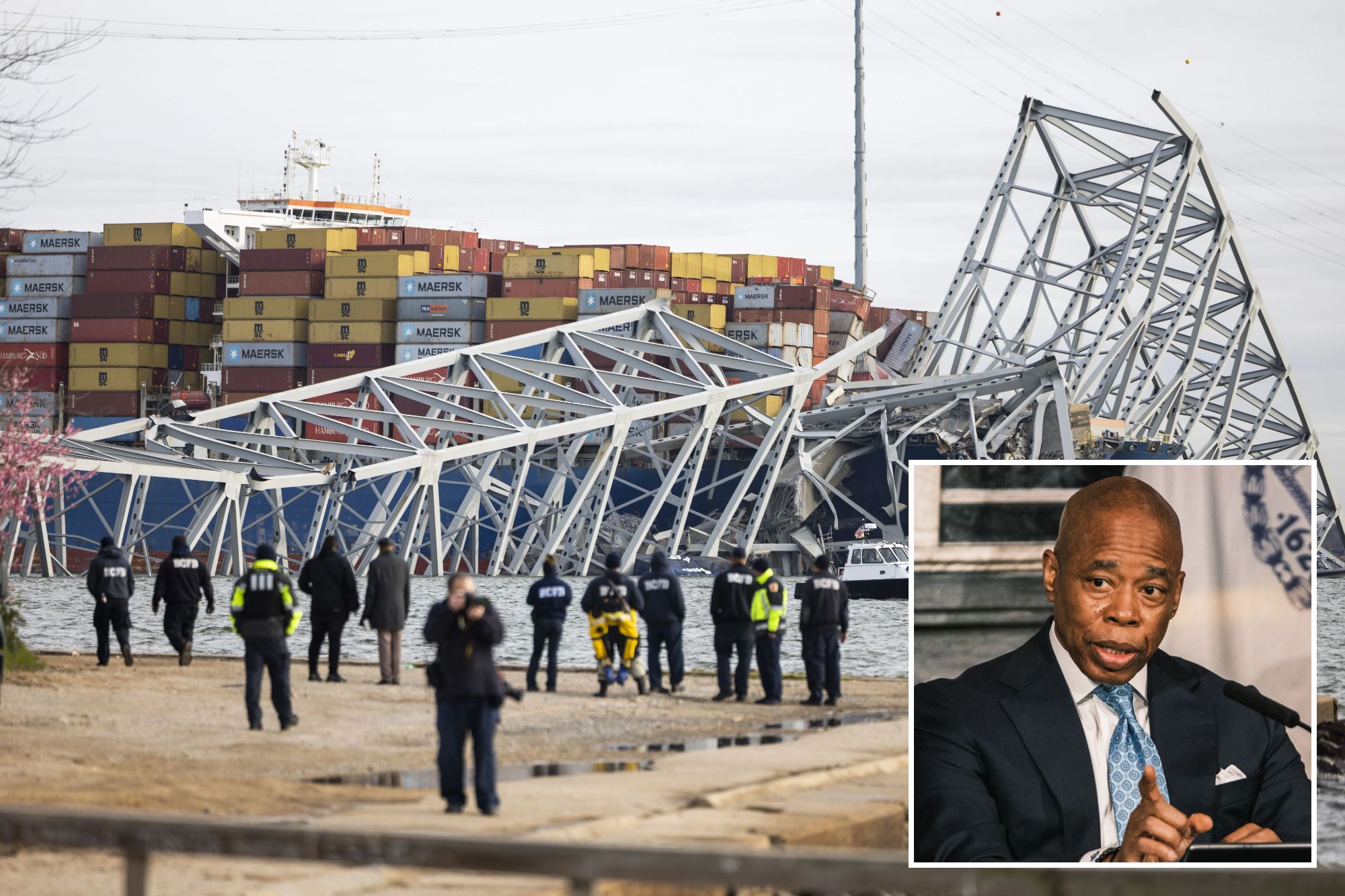
Big Apple officials insisted Tuesday that New York City is unlikely to experience a bridge disaster like the Baltimore collapse, saying its 14 spans are closely monitored — and that massive container ships do not traverse the Hudson or East Rivers.
“Our own bridge infrastructure is some of the most highly monitored infrastructure in the nation, and also the coordination with vessels and our bridge communication is highly sophisticated,” Deputy Mayor for Operations Meera Joshi said at a press conference.
“We want New Yorkers to rest assured that the right precautions are in place to ensure that our infrastructure is safe and remains safe, and how it interacts with both trucks and ships that both hit bridges occasionally. We have the right protections in place.”
Concerns about the risk New York City bridges face were briefly raised during the press conference, hours after the Francis Scott Key Bridge — one of Baltimore’s largest and most prominent bridges — collapsed into the Patapsco River after a container ship called the Dali lost power and slammed into it early Tuesday morning.
There are 14 bridges across the five boroughs, plus a number of spans along smaller waterways like the Harlem River, the Bronx Kill, Jamaica Bay, the reaches between Staten Island and New Jersey, and Newtown Creek separating Queens and Brooklyn.
Huge container ships like the Dali do not travel along the Hudson or East rivers, the Department of Transportation explained to The Post — meaning landmarks like the Brooklyn Bridge and the Queensboro Bridge are safe from such harm.
Barges driven by tugboats do regularly pass under the bridges over the East and Hudson rivers, but bridges across those rivers are designed with “larger concrete pedestals” to safeguard against collisions while smaller bridges up the Harlem River utilize fender systems on their bases.
The pilots who command the tugboats guiding the barges undergo a “very rigorous” testing, the DOT said, “helping ensure captains understand the harbor, its depths, and other obstacles to navigate through the waterways.”
Collisions on the East River, however, have happened in the past — including in July when a barge-carried crane crashed into the Brooklyn Bridge, leaving an I-beam on the outer frame cracked by no critical structural damage.
In 2014, the upper reaches of a container ship clipped the Brooklyn Bridge at high tide, but no serious damage occurred.
The Verrazzano Bridge, which reaches from Staten Island to Brooklyn across the entrance to New York Harbor and sees heavy traffic from large ships, is built with what the MTA called a “rip rap system” consisting of large rock islands surrounding the tower bases. The defense is intended to run wayward ships aground on the rocks before they could do any damage to the bridge’s bases.
Container ships the size of the vessel at the center of the Baltimore disaster would always be guided under bridges by at least four tugboats when passing under the Verrazzano, the Port Authority of NY and NJ told The Post, while two local pilots with knowledge of the waterways — a team known as the Sandy Hook Pilots — join the crew onboard the container ships to assist with navigation.
Some of the major freight yards in the area where large ships generally call are Port Newark and Elizabeth Port Authority Marine Terminal in New Jersey, and Howland Hook Marine Terminal on Staten Island. To access those ports, container ships generally pass beneath the Verrazzano, and then the Bayonne Bridge, which stretches from New Jersey to Staten Island.
Work to raise Bayonne’s clearance so larger container ships could pass safely underneath was completed in 2019, the Port Authority said, while its tower supports are located well outside the navigational channel and are buttressed by a fender system in case of absolute emergency.
“Port Authority bridges undergo a comprehensive, holistic inspection every two years,” a rep said, adding that a system of Coast Guard-mandated navigational lights help guide ships safely underneath.














